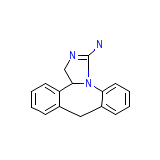Elestat




Elestat Brand names, Elestat Analogs
Elestat Brand Names Mixture
- No information avaliable
Elestat Chemical_Formula
Elestat RX_link
Elestat fda sheet
Elestat msds (material safety sheet)
Elestat Synthesis Reference
Elestat Molecular Weight
Elestat Melting Point
Elestat H2O Solubility
Elestat State
Elestat LogP
Elestat Dosage Forms
Elestat Indication
Elestat Pharmacology
Elestat Absorption
Elestat side effects and Toxicity
Elestat Patient Information
Information for Patients: Patients should be advised not to wear a contact lens if their eye is red. ELESTAT™ should not be used to treat contact lens related irritation. The preservative in ELESTAT™, benzalkonium chloride, may be absorbed by soft contact lenses. Contact lenses should be removed prior to instillation of ELESTAT™ and may be reinserted after 10 minutes following its administration.
Patients should be instructed to avoid allowing the tip of the dispensing container to contact the eye, surrounding structures, fingers, or any other surface in order to avoid contamination of the solution by common bacteria known to cause ocular infections. Serious damage to the eye and subsequent loss of vision may result from using contaminated solutions.
Bottle should be kept tightly closed when not in use.














